A Case of Right Middle Cerebral Artery M1 Segment Occlusion Treatment
Date:2025-03-12Category:Case ReportsViews:85
Key Device:
Zenith Aspiration Catheter
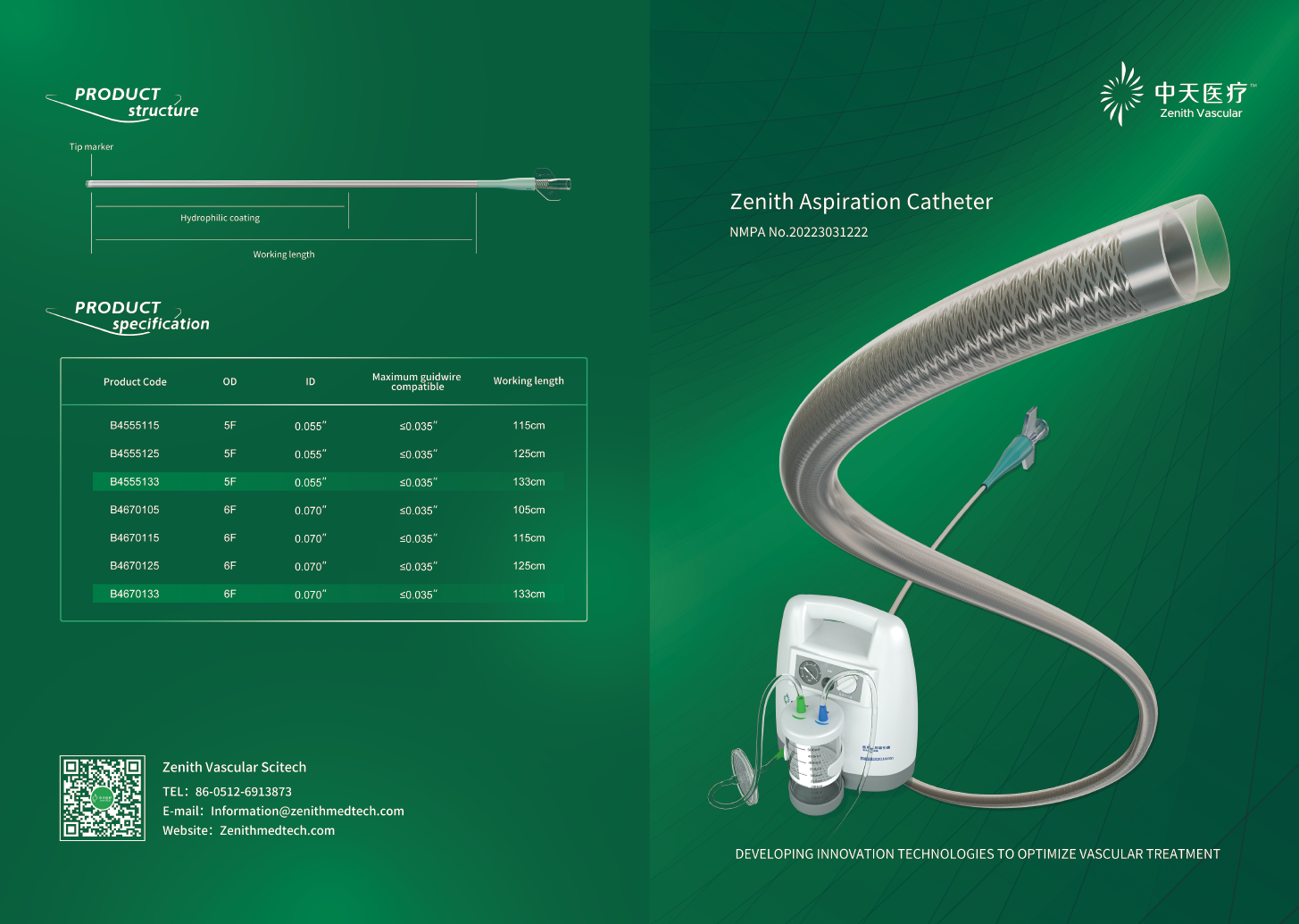
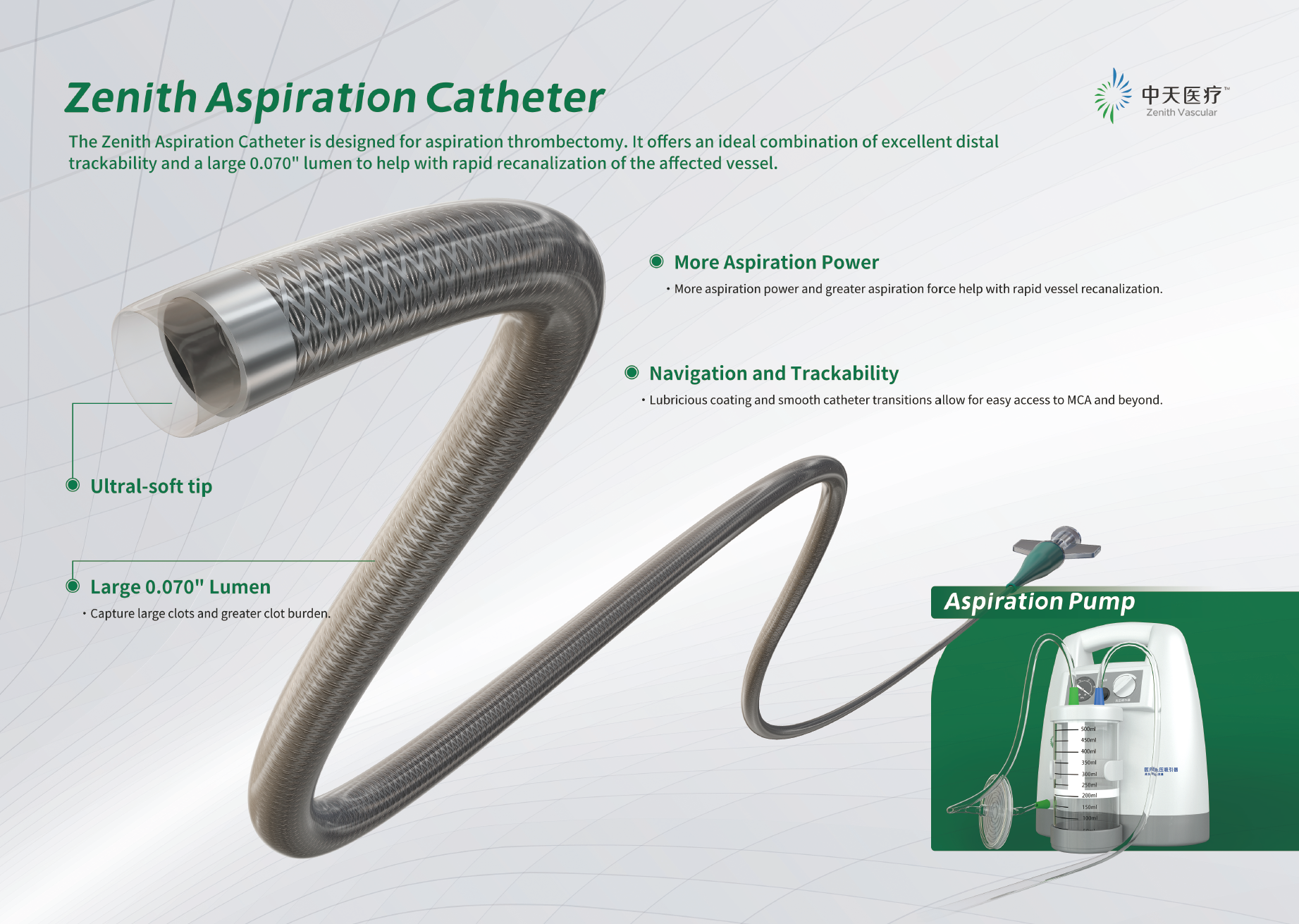
Patient information
- Female, 70 years old
- Unconscious for over 2 hours
- Myodynamia of left extremities: grade 1, Babinski’s sign (L+)
- NIHSS score: 15 points
- MRS score: 4 points
- Head CT showed no hemorrhage. CTA of the head and neck arteries, performed via the stroke emergency pathway, revealed occlusion of the right middle cerebral artery.
Preoperative examination
Preoperative imaging indicated lacunar infarctions in the left thalamus and periventricular white matter bilaterally.
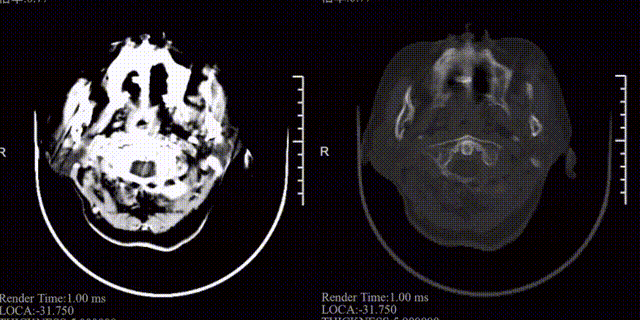
Surgical Plan
Preoperative Diagnosis:
- Massive cerebral infarction
- Right middle cerebral artery occlusion
- Atrial fibrillation
- Prosthetic heart valve
Treatment Strategy: ADAPT technique was prioritized to achieve rapid vascular recanalization and restore perfusion.
Devices
- 6F-125cm Zenith Aspiration Catheter
- 014inch Microguide Wire
- Rebar18 Microcatheter
Procedure
A femoral artery puncture was performed, and an 8F arterial sheath was placed. A 5F pigtail catheter was used for aortic arch angiography. After its removal, a 5F single-curve catheter was selectively placed in the bilateral common carotid arteries, confirming right MCA M1 segment occlusion with no significant abnormalities in other cerebral vessels.
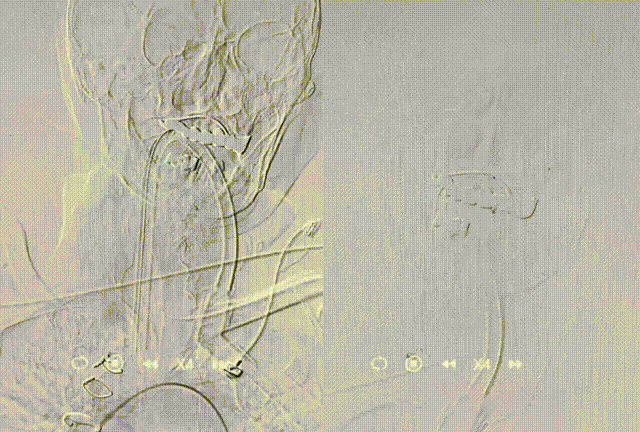
An 8F guide catheter was positioned at the distal right common carotid artery. Under roadmap guidance, a Zenith 6F aspiration catheter was advanced over a 0.035" glidewire to the C2 segment of the right internal carotid artery. The glidewire was then removed, and a 0.014" micro guidewire along with a Rebar18 microcatheter was successfully navigated through the occlusion into the mid-M2 segment. Microcatheter angiography revealed sluggish blood flow in the mid-to-distal M1 segment.
The Zenith 6F aspiration catheter was advanced along the microcatheter to the occlusion site at the M1 origin. Under continuous negative pressure aspiration, the thrombus was extracted, resulting in immediate vessel recanalization.

Postoperative Angiography
Final angiography confirmed successful recanalization of the right MCA, achieving TICI 3 reperfusion.
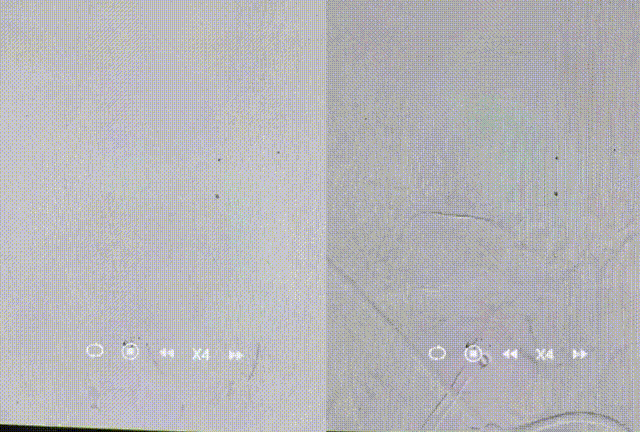
Postoperative Outcome
- The patient recovered well postoperatively, with full consciousness, clear speech, appropriate responses, and normal motor function.
- NIHSS Score: 0; mRS Score: 0
Summary
The ADAPT technique offers a simple, rapid recanalization approach with a low risk of hemorrhage but requires high-performance aspiration catheters. The Zenith Aspiration Catheter features an ultra-soft, non-traumatic tip made from specialized materials, reducing the risk of endothelial injury and dissection while maintaining excellent resistance to negative pressure collapse. The catheter body incorporates a 14-segment stiffness gradient design, enabling smooth navigation through tortuous intracranial vessels, ensuring precise positioning near the occlusion site, and making it highly effective for rapid large-vessel recanalization.
In this case, the Zenith Aspiration Catheter achieved high distal positioning, facilitating the rapid restoration of blood flow and contributing to the patient’s excellent clinical outcome.
Surgeon Information
Lei Zhang and Chunyan Xu, HuoQiu First People's Hospital




